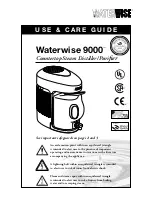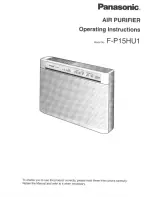
Grounding line
INDOOR
UNIT
OUTDOOR
UNIT
1
2
3
4
Terminal
1
2
3
N
L
Terminal
Grounding
line
Power supply
L
N
(B)
(C)
(A)
4
Single-phase 220 to 240VAC 50HZ
WIRING SYSTEM DIAGRAM
Fig. 6
Cross-Sectional
Area (mm
2
)
(A) Power Supply Wiring Length (m)
(B) Power Line
(C) Control Line
Fuse or Circuit
Breaker Capacity
20A
2.5mm
2
25
2.5mm
2
30
GCXV26 / GCXV30
Model
(m)
WARNING
7-2. Recommended Wire Length and Diameter
Regulations on wiring diameter differ from locality to locality. For field wiring requirements, please refer to your
local electrical codes. Carefully observe these regulations when carrying out the installation.
Table 2 lists recommended wire lengths and diameters for power supply systems.
Refer to the wiring system diagram (Fig. 6) for the meaning of (A), (B) and (C) in Table 2.
Be sure to comply with local codes on running the
wire from the indoor unit to the outdoor unit (size of
wire and wiring method, etc.).
Each wire must be firmly connected.
No wire should be allowed to touch refrigerant tubing,
the compressor, or any moving part.
Be sure to connect the power supply line to the outdoor
unit as shown in the wiring diagram. The indoor unit
draws its power from the outdoor unit.
Do not run wiring for antenna, signal, or power lines of
television, radio, stereo, telephone, security system, or
intercom any closer than 1 meter from the power cable
and wires between the indoor and outdoor units.
Electrical noise may affect the operation.
To avoid the risk of electrical shock, each air
conditioner unit must be grounded.
For the installation of a grounding device, please
observe local electrical codes.
Grounding is necessary, especially for units using
inverter circuits, in order to release charged
electricity and electrical noise caused by high
tension. Otherwise, electrical shock may occur.
Place a dedicated ground more than 2 meters away
from other grounds and do not have it shared with
other electric appliances.
Table 2
CAUTION
WARNING
NOTE
25
















































